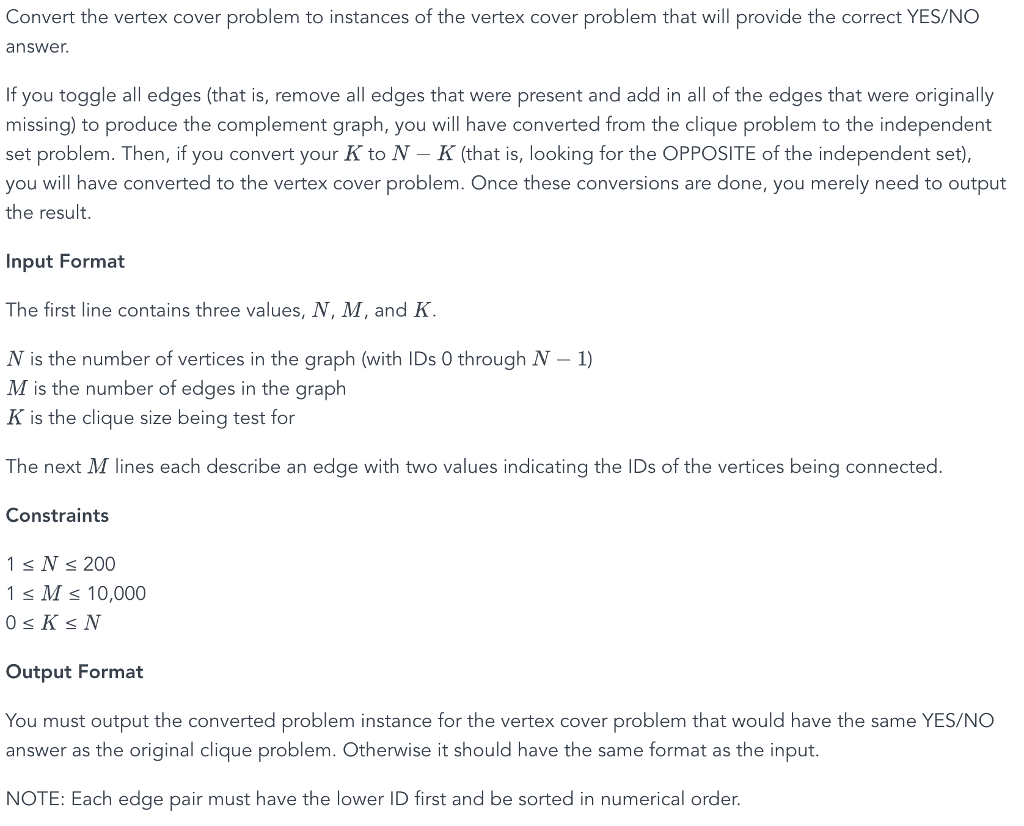*Please provide solution in C++ or Python (C++ Preferred)*



Convert the vertex cover problem to instances of the vertex cover problem that will provide the correct YES/NO answer. If you toggle all edges (that is, remove all edges that were present and add in all of the edges that were originally missing) to produce the complement graph, you will have converted from the clique problem to the independent set problem. Then, if you convert your K to N - K (that is, looking for the OPPOSITE of the independent set), you will have converted to the vertex cover problem. Once these conversions are done, you merely need to output the result. Input Format The first line contains three values, N, M, and K N is the number of vertices in the graph (with IDs O through N-1) M is the number of edges in the graph K is the clique size being test for The next M lines each describe an edge with two values indicating the IDs of the vertices being connected. Constraints 1 s N s 200 1 s M s 10,000 Output Format You must output the converted problem instance for the vertex cover problem that would have the same YES/NO answer as the original clique problem. Otherwise it should have the same format as the input NOTE: Each edge pair must have the lower ID first and be sorted in numerical order Convert the vertex cover problem to instances of the vertex cover problem that will provide the correct YES/NO answer. If you toggle all edges (that is, remove all edges that were present and add in all of the edges that were originally missing) to produce the complement graph, you will have converted from the clique problem to the independent set problem. Then, if you convert your K to N - K (that is, looking for the OPPOSITE of the independent set), you will have converted to the vertex cover problem. Once these conversions are done, you merely need to output the result. Input Format The first line contains three values, N, M, and K N is the number of vertices in the graph (with IDs O through N-1) M is the number of edges in the graph K is the clique size being test for The next M lines each describe an edge with two values indicating the IDs of the vertices being connected. Constraints 1 s N s 200 1 s M s 10,000 Output Format You must output the converted problem instance for the vertex cover problem that would have the same YES/NO answer as the original clique problem. Otherwise it should have the same format as the input NOTE: Each edge pair must have the lower ID first and be sorted in numerical order









